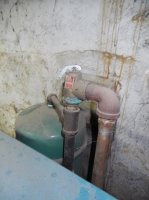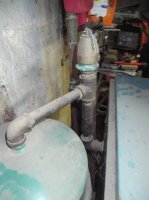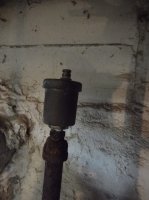First I have a Thermo Dynamics S series oil fired boiler about 25 years old.
There are three heat zone lower level den small zone, 1st and second floor large main zone and upper level bedroom small zone
The problem I've been having for the last three years is no heat on the second floor of the main zone. seems the pressure was too low too push the water up to the second floor. The issue was compounded by the fact that the pressure part of the gauge never changes from about 12 and I believe it isn't functioning. In the past by playing around with the pressure regulator valve for the water, it seemed as if it was stuck and not letting any water enter. after messing with it I felt the cold water flow in and after bleeding, the heat began coming up on the second floor.
Again this year I had the same issue and result except that the boiler expansion tank valve has pissed off some water 2 or three times in 2 days. I would like to solve this issue. I went out and got a test gauge that I was able too hook into one of the lines where there had been a plug so I could monitor the pressure. There is no doubt the original gauge is broken.
When the boiler isn't running but is on, the new gauge reads zero when the boiler goes on and heats up it hits about 26 or 27 lbs which seems normal. not sure why it let out water??
I would welcome any ones thoughts on this whole matter. Thanks Matt
There are three heat zone lower level den small zone, 1st and second floor large main zone and upper level bedroom small zone
The problem I've been having for the last three years is no heat on the second floor of the main zone. seems the pressure was too low too push the water up to the second floor. The issue was compounded by the fact that the pressure part of the gauge never changes from about 12 and I believe it isn't functioning. In the past by playing around with the pressure regulator valve for the water, it seemed as if it was stuck and not letting any water enter. after messing with it I felt the cold water flow in and after bleeding, the heat began coming up on the second floor.
Again this year I had the same issue and result except that the boiler expansion tank valve has pissed off some water 2 or three times in 2 days. I would like to solve this issue. I went out and got a test gauge that I was able too hook into one of the lines where there had been a plug so I could monitor the pressure. There is no doubt the original gauge is broken.
When the boiler isn't running but is on, the new gauge reads zero when the boiler goes on and heats up it hits about 26 or 27 lbs which seems normal. not sure why it let out water??
I would welcome any ones thoughts on this whole matter. Thanks Matt




